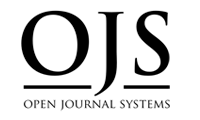Cladocera as a substitute for Artemia as live feed in aquaculture practices: a review.
Main Article Content
Abstract
Rearing larval forms of fishes is a crucial and critical step in aquaculture practices. Proper nurturing of juvenile forms is important to ensure their survival and growth. Supplementary feeds have been used long since to augment growth and productivity of fishes throughout the world. Despite, availability of a variety of advanced artificial feeds, zooplanktons have been preferred over artificial feeds for their qualities like: better digestibility, nutritional levels, preference by fish larvae and economic feasibility, especially for rearing young fin and shell fish species. Conventionally, Artemia sp. (brine shrimps) has been preferred among live feed organisms for rearing of fish larvae, but, applicability of cladocerans has been less explored despite their several beneficial features. Studies have reported most cladocerans species (especially, Moina sp. and Daphnia sp.) are nutritionally rich comprising of a variety of essential fatty acids, amino acids, digestive enzymes and micronutrients etc. Being an important component of trophic structure in water bodies, they form a link between different trophic levels through food chain relationships, ensuring nutrient dynamics. Their small size and jerky movements make them attractive to larval fish forms. Moreover, their cost effective culture process can thus be an efficient, feasible, economical and sustainable alternative to comparatively costlier and less abundant Artemia feed. This article endeavours to review and highlight the efficiency of cladocerans over Artemia feed for providing a viable and sustainable diet in commercial aquaculture practice.
Article Details

This work is licensed under a Creative Commons Attribution-NonCommercial-ShareAlike 4.0 International License.



